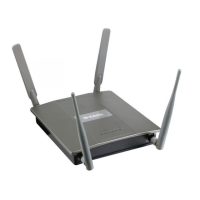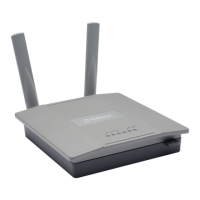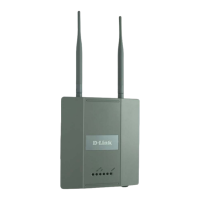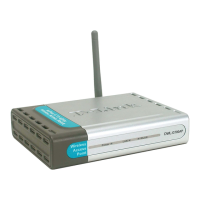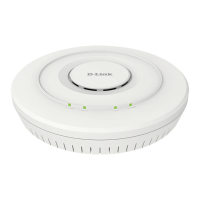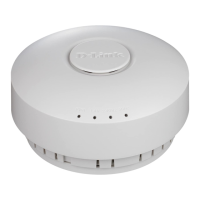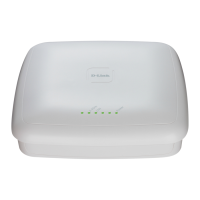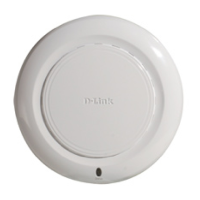Configuring DHCP Snooping
D-Link Unified Wired and Wireless Access System
Oct. 2015 Page 255
D-Link UWS User Manual
• Click Refresh to update the screen with most recent data.
Configuring DHCP Snooping
DHCP snooping is a security feature that monitors DHCP messages between a DHCP client and DHCP servers
to filter harmful DHCP messages and to build a bindings database of {MAC address, IP address, VLAN ID, port}
tuples that are considered authorized. You can enable DHCP snooping globally and on specific VLANs, and
configure ports within the VLAN to be trusted or untrusted. DHCP servers must be reached through trusted
ports. DHCP snooping enforces the following security rules:
• DHCP packets from a DHCP server (DHCPOFFER, DHCPACK, DHCPNAK, DHCPRELEASEQUERY) are dropped
if received on an untrusted port.
• DHCPRELEASE and DHCPDECLINE messages are dropped if destined for a MAC address in the snooping
database, but the corresponding IP address in the snooping database is different than the interface where
the message was received.
• On untrusted interfaces, the switch drops DHCP packets whose source MAC address does not match the
client hardware address. This feature is a configurable option.
The hardware identifies all incoming DHCP packets on ports where DHCP snooping is enabled. DHCP snooping
is enabled on a port if (a) DHCP snooping is enabled globally, and (b) the port is a member of a VLAN where
DHCP snooping is enabled. On untrusted ports, the hardware traps all incoming DHCP packets to the CPU. On
trusted ports, the hardware forwards client messages and copies server messages to the CPU so that DHCP
snooping can learn the binding.
Global DHCP Snooping Configuration
To access the DHCP Snooping Configuration page, click LAN > L2 Features > DHCP Snooping > Configuration
in the navigation tree.
Figure 155: DHCP Snooping Configuration
R BPDUs Transmitted Number of R BPDUs transmitted from the selected port.
M BPDUs Received Number of M BPDUs received at the selected port.
M BPDUs Transmitted Number of M BPDUs transmitted from the selected port.
Table 137: Spanning Tree Statistics Fields (Cont.)
Field Description
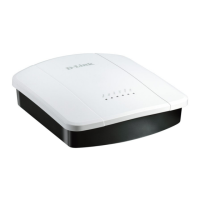
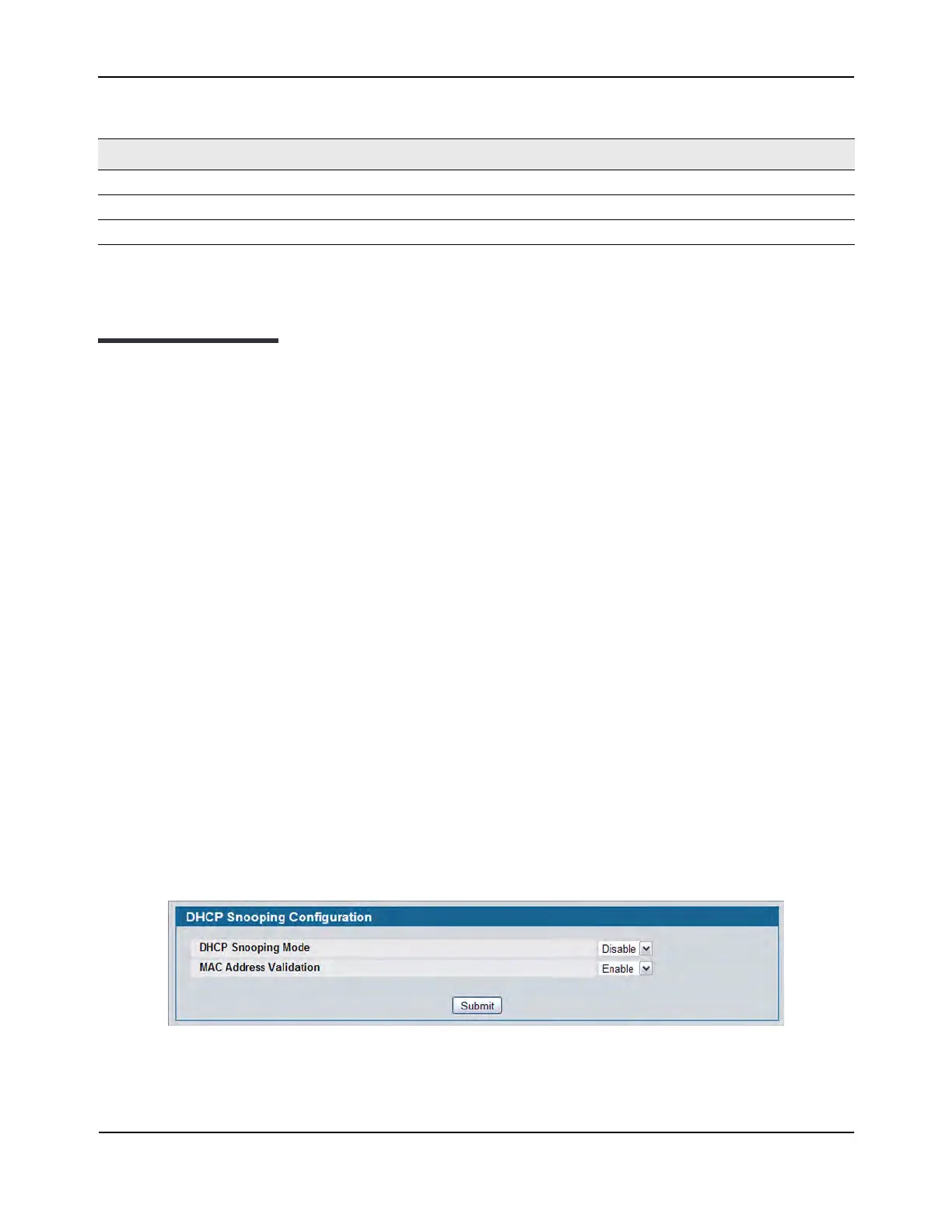